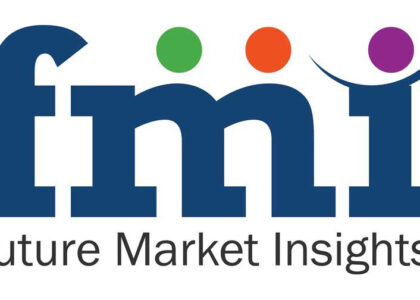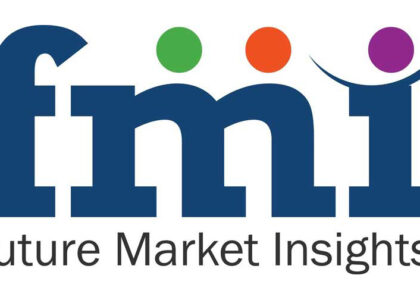The global digital label printing market is poised for substantial growth, with an expected demand of approximately US$ 11.06 billion in 2023. This growth trajectory is projected to continue, reflecting a commendable compound annual growth rate (CAGR) of approximately 5.3%. By the year 2033, the market is forecasted to reach a significant valuation of around US$ 18.54 billion. The driving force behind this growth is the ongoing advancements and innovations in the textile industry on a global scale, which are influencing the demand for digital label printing solutions across various applications.
The digital label printing market is a segment of the printing industry that focuses on the production of labels and packaging materials using digital printing technology. This market has witnessed significant growth in recent years due to its flexibility, customization capabilities, and ability to cater to various industries.
Request Sample Copy of the Report: https://www.futuremarketinsights.com/reports/sample/rep-gb-2102
Here’s an overview of the digital label printing market:
- Digital Printing Technology:
- Digital label printing utilizes digital printing technology, which includes inkjet and laser printing methods.
- Unlike traditional printing methods (such as flexographic or offset printing), digital printing does not require printing plates, making it more cost-effective for short runs and customizable printing.
- Key Applications:
- Digital label printing finds applications across various industries, including food and beverage, pharmaceuticals, cosmetics, and consumer goods.
- It is used for product labels, packaging labels, promotional labels, and variable data printing (such as barcodes and QR codes).
- Customization and Personalization:
- Digital label printing allows for high levels of customization and personalization, making it suitable for small-batch printing with unique designs and content.
- Brands can tailor labels to specific promotions, events, or even individual customers.
- Shorter Turnaround Times:
- Digital printing offers shorter production times, making it ideal for businesses that require quick label changes or frequent design updates.
- This capability is crucial for industries with rapidly changing product lines or marketing campaigns.
- Sustainability:
- Digital label printing can contribute to sustainability efforts by reducing waste, as it does not require the creation of printing plates.
- Eco-friendly ink and substrate choices are available, aligning with green packaging trends.
- Variable Data Printing:
- Digital label printing enables variable data printing, allowing for the inclusion of unique information on each label.
- This is valuable for products with individualized packaging or serialization requirements.
- Market Growth Drivers:
- Factors driving the growth of the digital label printing market include the rising demand for customized packaging, increased use of labels in e-commerce, and the need for anti-counterfeiting measures.
- E-commerce and direct-to-consumer brands often rely on digital label printing for on-demand printing and label personalization.
- Competitive Landscape:
- The market includes a mix of traditional printing companies that have incorporated digital capabilities and specialized digital printing service providers.
- Technological advancements and investments in digital printing equipment are common among industry players.
- Technological Advancements:
- Ongoing advancements in digital printing technology, such as higher resolution, faster printing speeds, and improved color accuracy, drive market innovation.
- Regulatory Compliance: – Labels for certain industries, like pharmaceuticals and food, must adhere to strict regulatory requirements, influencing the choice of digital label printing.
Ask an Analyst: https://www.futuremarketinsights.com/ask-the-analyst/rep-gb-2102
Key Players:
- Samsung Label Printing Co. Ltd.
- Bharat Traders
- Shijin Plastic Packaging Co. Ltd.
- Tangshan Wanjie Machinery Equipment Co. Ltd.
- Dongguan Grandrise Co. Ltd.
- FORMTEK KOREA LTD
- LabelTraxx
- King print
- Canon Inc.
- AstraNova Inc.
- Afinia Label
- Arrow Digital Private Limited
Regional Analysis:
- North America:
- Key Markets: The United States and Canada are major players in the North American digital label printing market.
- Market Sophistication: North America has a mature packaging industry, with a high level of adoption of digital label printing for customized packaging and labeling.
- Regulatory Compliance: Stringent labeling regulations, especially in the food and pharmaceutical sectors, drive the demand for digital label printing.
- Europe:
- Key Markets: Major European markets include the United Kingdom, Germany, France, and Italy.
- Packaging Innovations: Europe is known for its innovative packaging solutions, with digital label printing playing a vital role in delivering customized and attractive packaging.
- Sustainability: Eco-friendly and sustainable label printing options are a growing trend in Europe.
- Asia-Pacific (APAC):
- Key Markets: China, India, Japan, and South Korea are significant markets in APAC.
- Manufacturing Hub: APAC is a global manufacturing hub, and digital label printing is widely adopted for product packaging.
- Emerging Economies: Rapid economic growth in countries like China and India is driving demand for consumer goods and, consequently, label printing.
- Latin America:
- Emerging Markets: Latin American countries, including Brazil and Mexico, are emerging as important markets for digital label printing.
- Growth in Food and Beverage: The growth of the food and beverage industry fuels the demand for attractive and informative labels.
- Middle East and Africa (MEA):
- Diverse Market: MEA countries have a diverse market for digital label printing, influenced by cultural preferences and economic conditions.
- Local Production: Some countries in the MEA region focus on local label production to meet regional demand.
- Regional Preferences:
- Different regions may have unique preferences for label designs, materials, and printing methods, influenced by local culture and consumer preferences.
Request Report Methodology: https://www.futuremarketinsights.com/request-report-methodology/rep-gb-2102
About Future Market Insights (FMI)
Future Market Insights, Inc. (ESOMAR certified, recipient of the Stevie Award, and a member of the Greater New York Chamber of Commerce) offers profound insights into the driving factors that are boosting demand in the market. FMI stands as the leading global provider of market intelligence, advisory services, consulting, and events for the Packaging, Food and Beverage, Consumer Technology, Healthcare, Industrial, and Chemicals markets. With a vast team of over 5000 analysts worldwide, FMI provides global, regional, and local expertise on diverse domains and industry trends across more than 110 countries.
Contact Us:
Future Market Insights Inc.
Christiana Corporate, 200 Continental Drive,
Suite 401, Newark, Delaware – 19713, USA
T: +1-845-579-5705
For Sales Enquiries: sales@futuremarketinsights.com
Website: https://www.futuremarketinsights.com
LinkedIn| Twitter| Blogs | YouTube



